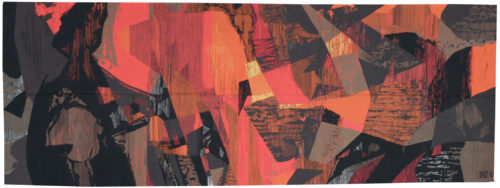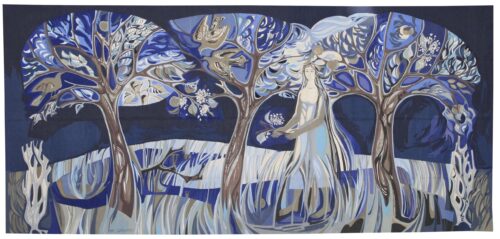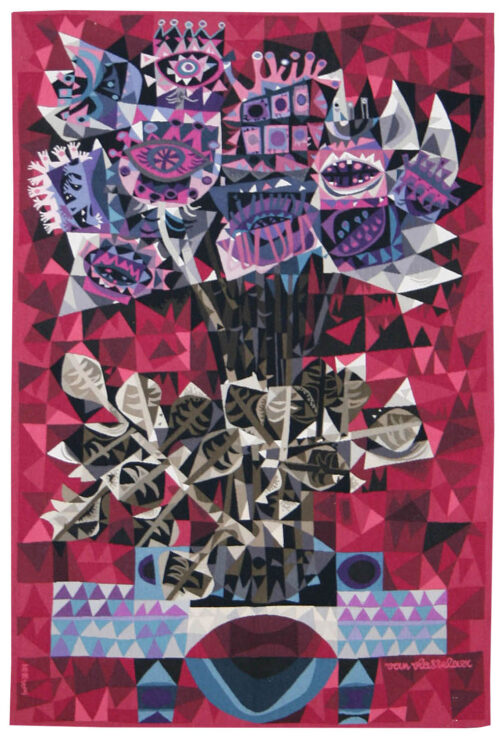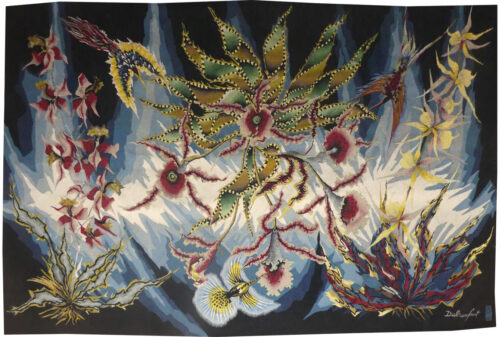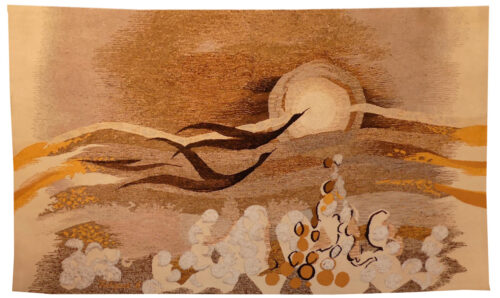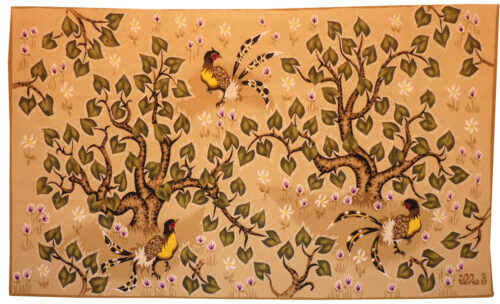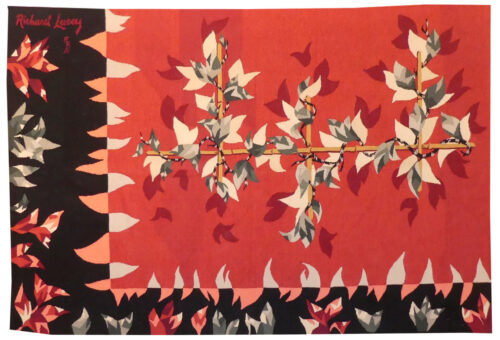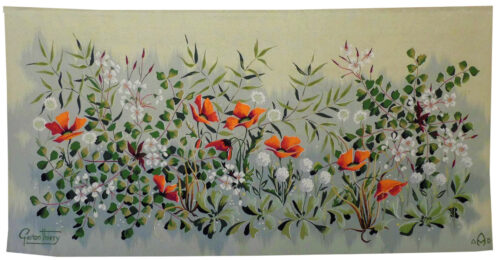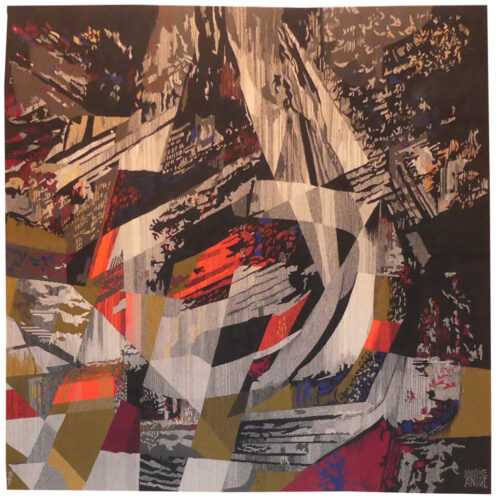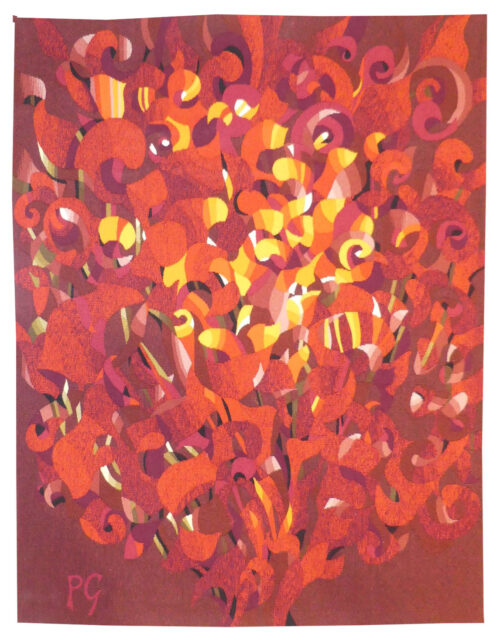Le soleil d'Apremont (the sun of Apremont)
Aubusson tapestry woven in the Picaud workshop.
With signed label, n°1/4.
Circa 1965.
Maurice André settled in Aubusson for the duration of the second world war. A founding member of the group “Tapisserie de France” and a member of the A.P.C.T. (Association des Peintres-Cartonniers de Tapisserie), he developed a personal style, different from that of Lurçat, characterised by rigorous, cubist-influenced flat areas of colour, often using a limited palette ; he received large-scale public commissions for the Council of Europe in Strasbourg (“L’Europe unie dans le Travail et la Paix”) or for the French pavilion at the Brussels Exhibition in 1958 (“La Technique moderne au service de l’Homme”). Gradually (as with Wogensky and Prassinos,...) his style evolved towards more abstraction, firstly lyrical and then more and more geometric, in a way very similar to Matégot.
In the mid 1960’s André’s style becomes comparable to that of Matégot, made of lyrical ensembles of triangular shapes, in a homogenous colour scheme and sprinkled with stripes, stains, marks... often black, where different techniques specific to the weaver’s art are used to accentuate the impression of volume and depth.


